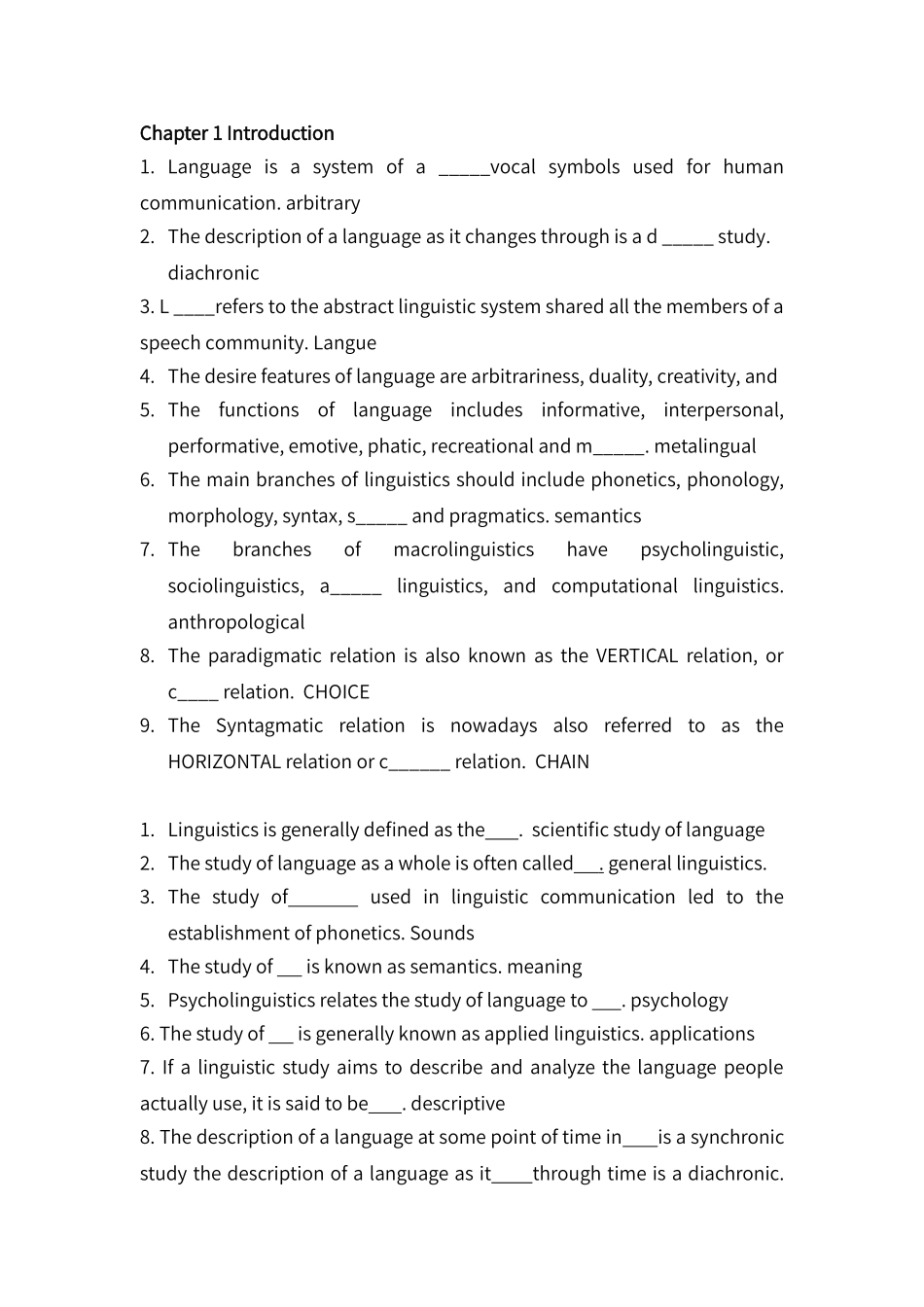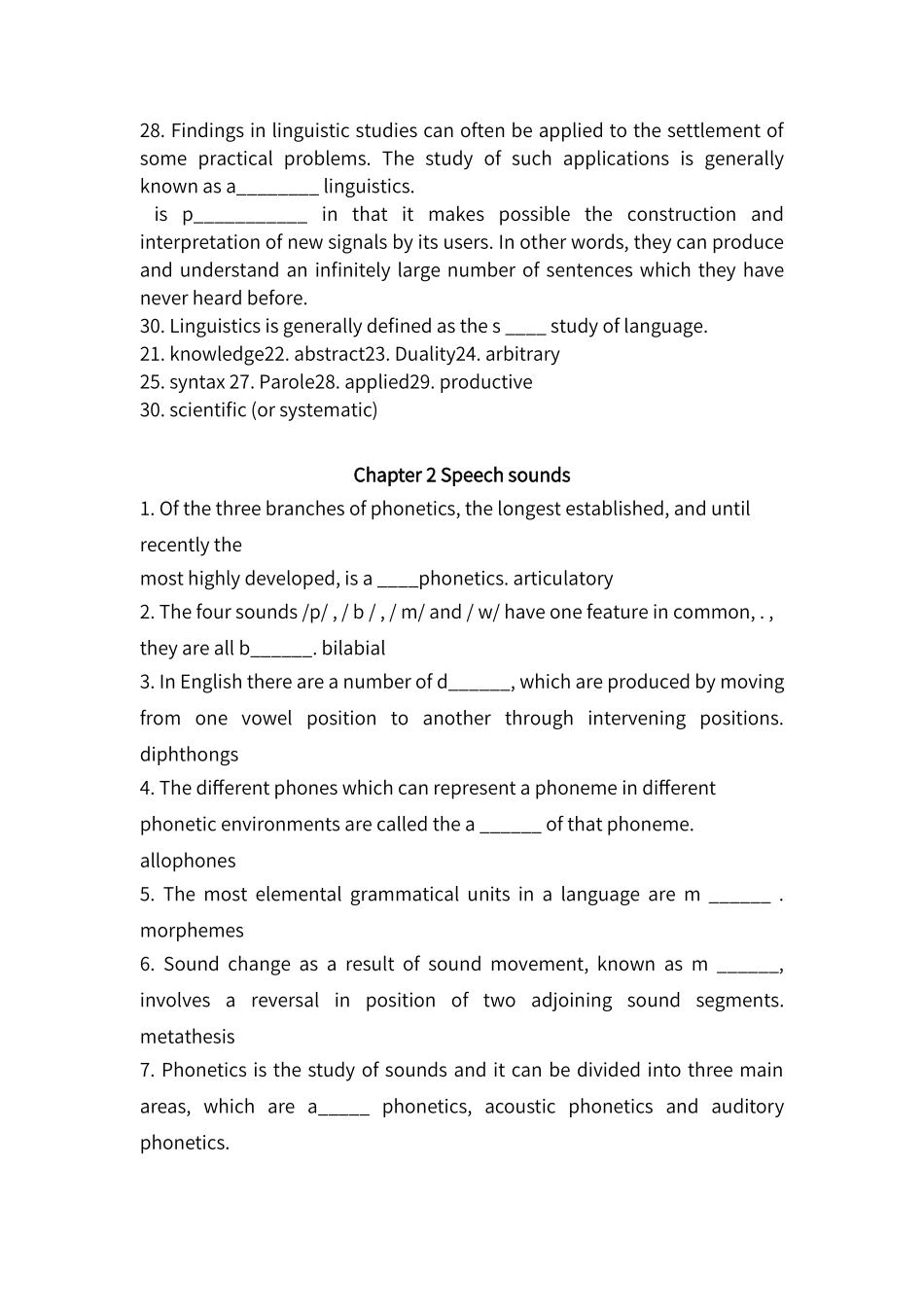Chapter 1 Introduction1. Language is a system of a _____vocal symbols used for human communication. arbitrary 2. The description of a language as it changes through is a d _____ study. diachronic3. L ____refers to the abstract linguistic system shared all the members of a speech community. Langue4. The desire features of language are arbitrariness, duality, creativity, and 5. The functions of language includes informative, interpersonal, performative, emotive, phatic, recreational and m_____. metalingual6. The main branches of linguistics should include phonetics, phonology, morphology, syntax, s_____ and pragmatics. semantics7. The branches of macrolinguistics have psycholinguistic, sociolinguistics, a_____ linguistics, and computational linguistics. anthropological8. The paradigmatic relation is also known as the VERTICAL relation, or c____ relation. CHOICE 9. The Syntagmatic relation is nowadays also referred to as the HORIZONTAL relation or c______ relation. CHAIN1. Linguistics is generally defined as the . scientific study of language2. The study of language as a whole is often called . general linguistics.3. The study of used in linguistic communication led to the establishment of phonetics. Sounds4. The study of is known as semantics. meaning5. Psycholinguistics relates the study of language to . psychology6. The study of is generally known as applied linguistics. applications7. If a linguistic study aims to describe and analyze the language people actually use, it is said to be . descriptive8. The description of a language at some point of time in is a synchronic study the description of a language as it through time is a diachronic. history; changes9. From the point of view of linguistic evolution, speec...


